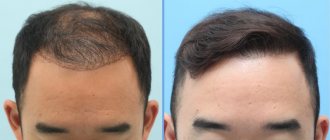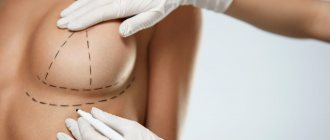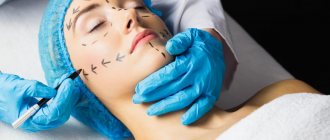Residents of Kursk now no longer need to travel to the capital to replace their hip joint. Two medical institutions in the city have successfully mastered and implemented implantation techniques, and the state has made it possible to purchase high-quality endoprostheses and instruments.
How much does endoprosthetics cost in Kursk? This operation, as in any region of the country, can be done free of charge if you can get a quota, or at the expense of an insurance organization.
For a fee, you can replace the joint either in City Clinical Hospital No. 4 or in the OKB. In this case, the operation itself and the hospital stay are paid for by compulsory medical insurance, and the patient only needs to pay for the endoprosthesis by filling out the necessary paperwork.
How to get a quota
First of all, you need to collect all extracts from the medical history, photographs, examination results and contact a specialist at the medical institution assigned to your place of registration. The medical commission must analyze the documents and make a decision on sending the patient for treatment to a specialized institution to provide high-tech medical care. The result should be known within 3 days. If it is positive, a quota decision protocol is drawn up.
Also, within three days, a package of documents is sent to the health authorities. The patient can receive the papers in hand and independently take them to the committee. The following documents must be present:
- an extract of their protocol from the medical commission of the sending institution;
- written statement from the patient;
- consent to the processing of personal data;
- copies: passport, compulsory medical insurance policy, SNILS, extract from the medical history, test results.
When to see a plastic surgeon
An appointment with a specialist is required before any plastic surgery.
In the office, the doctor listens to your wishes, carefully examines and palpates the area where the intervention is planned, and measures the thickness of the tissue. Before consulting a plastic surgeon, it is recommended that patients seeking rhinoplasty undergo diagnostic testing. Patients who decide to undergo rhinoplasty can save time if they undergo an examination in advance: CT scan or x-ray of the nasal bones in frontal and lateral projections along with endoscopic examination of the nasal cavities. The diagnostic results will help the doctor give more specific recommendations and choose the appropriate surgical method at the first consultation. After consulting with your doctor, you may be prescribed additional tests.
Personal income tax deduction
Also, do not forget about the possibility of receiving a personal income tax deduction for paid treatment. That is, the state will return 13% of the total amount spent to the taxpayer if:
- the service is provided by a medical institution of the Russian Federation;
- the service is included in a special list;
- the medical institution has a license to carry out this type of activity.
List of documents for the tax office as part of the 3-NDFL declaration:
- agreement with the clinic for the provision of medical services;
- certificate of payment (issued by the medical institution);
- documents confirming the fact of payment;
- certificate 2-NDFL.
Hip replacement is an expensive type of treatment, so the deduction is provided in full without a limit of 120,000 rubles.
Administration
Chief physician
Full name: Vladimir Dmitrievich Lutsenko
Reception of citizens - on Wednesdays from 9:00 to 13:00
Reception:
☎ +7 (4712) 35-03-87
Deputy for medical parts
Full name: Sergey Aleksandrovich Pribylov
Reception of citizens - on Tuesdays from 10:00 to 13:00
Contact number:
☎ +7 (4712) 35-36-82
Deputy in surgery
Full name: Alexey Leonidovich Loktionov
Reception of citizens - on Thursdays from 10:00 to 13:00
Tel.:
☎ +7 (4712) 35-29-05
Deputy at the clinic
Full name: Snezhana Viktorovna Kremenskaya
Reception of visitors - on Fridays from 10:00 to 13:00 (clinic, room No. 217)
Tel.:
☎ +7 (4712) 35-45-16
What is the cost of the operation?
Each clinic has its own pricing policy, so the cost indicated on the websites is not always final. It depends on the manipulations that are included by the institution in the process of endoprosthetics surgery. The minimum price starts from 50,000 rubles without the cost of the endoprosthesis. But when you include hospital stay, anesthesia, consumables, the cost of medical procedures and medications, as well as nutrition and rehabilitation measures, you get at least 100,000 rubles.
A system for total prosthetics with cementless fixation costs from 125 thousand rubles, cement fixation – from 90 thousand rubles, a single-pole prosthesis from 55 thousand rubles. However, in recent years, Russian manufacturers have been improving the quality of their endoprostheses to generally accepted world standards, and their prices are 2-3 times lower than imported ones.
Non-surgical blepharoplasty
Plastic surgery and cosmetology offers the following main methods of eyelid correction - non-surgical blepharoplasty (injection blepharoplasty), hardware blepharoplasty, laser blepharoplasty (blepharoplasty with Plasma Jet laser, DROT laser rejuvenation), upper and lower blepharoplasty (surgical).
During the consultation, a specialist assesses the problem and suggests one or another correction method. The main advantage of our clinic is that all specialists are located in one place. For example, a patient makes an appointment for a consultation regarding blepharoplasty of the lower and upper eyelids. The patient does not understand what kind of specialist is required - a cosmetologist or a plastic surgeon. In a telephone conversation, the clinic administrator finds out the patient’s age, the extent of the problem and makes an appointment with a specialist.
If the patient falls into the age category of up to 35 years, then, as a rule, the initial appointment takes place with a cosmetologist. Thanks to laser and injection techniques, it is possible to solve a fairly wide range of problems. For older patients who have obvious excess overstretched skin and eyelid hernia, surgical correction is indicated.
Non-surgical blepharoplasty with fillers allows you to remove dark circles, hollows under the eyes, and facial wrinkles. The procedure takes no more than 15 minutes and is performed by a qualified cosmetologist. Compositions and drugs are selected individually and depend on the problem. As a rule, they contain hyaluronic acid, beneficial peptides, and vitamins. No special rehabilitation is required; no traces of the procedure remain. In the first 2 weeks, any thermal procedures (baths, saunas, facial massage, solarium, sunbathing) are not recommended.
Each patient must have an individual approach, since everyone has their own characteristics in anatomy, tissues, and predispositions to aging. Eyelid correction using injection methods will not be effective for older patients with significant ptosis and hernias. The specialist’s task is to suggest only the method that will be most effective in each individual case. This will not only save you money, but also achieve the desired result.
In non-surgical blepharoplasty, laser correction technologies are used, the skin is treated with a Plasma Jet plasma device and injections of special fillers are made. For example, to eliminate the effect of “sunken eyes” and non-surgically lift the eyelid, a Botox injection and plasma or laser treatment of the skin may be offered. And to smooth out wrinkles around the eyes, eliminate bags, swelling and dark circles around the eyes, special dense fillers are introduced. The estimated cost of lower eyelid blepharoplasty is 20,000-25,000 rubles. You can find out the exact price by consulting a specialist.
City Clinical Hospital No. 4
The hospital was opened in 1862. Works closely with Kursk State Medical University. The first manipulations to replace large joints in the hospital began in 1995, and since 2005, hip joint implantation has already been put on stream. Patients are observed for six months and, if necessary, are registered with a dispensary.
Doctors are trained in endoprosthetics in Moscow. The specialists of the traumatology department are actively mastering the latest techniques, including minimally invasive methods.
The hospital has entered into long-term contracts for the supply of endoprostheses with American, German, and English companies. The average price is about 120 thousand rubles, but they are installed free of charge for patients within the framework of the program for the provision of high-tech medical care. Implants are installed mainly for people with deforming arthrosis of the hip joint. Quotas for such operations are issued to disabled people. Therefore, a patient in need of a hip replacement goes through the following stages:
- a medical consultation, where the issue of the need for this type of intervention is decided;
- VTEC to determine the disability group;
- submission of a package of documents to the health committee, where the quota is issued and
- queuing.
The following documents must be submitted to the health committee:
- an extract from the medical history printed in 3 copies, stamped and signed by the director of the referring clinic. An electronic statement must also be attached;
- decision of the medical commission on the selection of patients for the provision of high-tech medical care with recommendations for treatment in one of the central clinics;
- photocopy of passport pages with registration and photo, compulsory health insurance policy, SNILS, certificate of disability if available.
How to make an initial appointment
You can submit your application as follows:
- arrive at the hospital reception in person;
- call the reception by phone from 5 to 7 pm;
- through the Unified Portal of State Services.
When going to the hospital, you must have your passport and compulsory medical insurance policy in the original or certified copies. Appointments are made depending on the doctor's availability. When contacting by phone, you must provide your full name, unified health insurance policy number, SNILS, passport details and contact phone number. Information about the specialization of the doctor to whom the appointment is being made is also required.
Branch telephones
You can find the branch by searching. Start typing a word and the program will show the results it finds. Search is at the top of the table.
| Branch | Contact phone numbers |
| Reception | Head: Marina Grigorievna Bykanova +7 |
| Operating unit | Head: Oleg Sergeevich Ponomarev +7 |
| Cardiology RSC Regional Vascular Center - Cardiology Department. for patients with acute coronary syndrome. Primary vascular department | Head: Nikolai Nikolaevich Kurbakov +7 Residential: +7 Resuscitation and intensive care: +7 Senior nurse: Yulia Ivanovna Korsun +7 |
| Neurology RSC Regional Vascular Center - neurological department. for patients with acute cerebrovascular accident. Primary vascular department | Head: Andrey Evgenievich Biryukov +7 |
| 1st Department of X-ray surgical methods of treatment and diagnosis of the RSC | Information |
| Gastroenterological | Head: Natalya Valerievna Zheleznova +7 |
| Hematological | Head: Vera Nikolaevna Chertkova +7 |
| Cardiology therapeutic profile | Head: Olga Evgenievna Kolesnikova +7 |
| Neurological therapeutic profile | Information |
| Nephrological | Head: Moiseenko E.I. Ordinatorskaya Senior nurse |
| Allergology and immunology | Head: Margarita Yuryevna Korshikova +7 Residential Senior nurse |
| Pulmonological | Head: Evgeny Aleksandrovich Shabanov +7 |
| Rheumatological | Head: Olesya Borisovna Ershova +7 |
| Endocrinological | Head: Svetlana Ivanovna Melchinskaya +7 |
| Surgical | Head: Olga Sergeevna Gorbacheva +7 Reference number |
| Coloproctological | Head: Vladimir Borisovich Shuklin +7 |
| Neurosurgical | Head: Alexander Gennadievich Korolev +7 |
| Burn | Head: Anatoly Ivanovich Krasnoukhov +7 |
| Department of Purulent Surgery | Head: Sergey Nikolaevich Grigoriev +7 |
| Vascular surgery | Head: Leonid Nikolaevich Belikov +7 |
| Maxillofacial Surgery | Head: Sergey Serafimovich Frolov +7 |
| Otorhinolaryngology (ENT department) | Head: Nikita Aleksandrovich Nikitin +7 |
| Traumatology and orthopedic department | Head: Alexander Yuryevich Dokalin +7 Ordinatorskaya Senior nurse Post |
| Urological | Head: Sergey Viktorovich Lazarenko +7 |
| Thoracic surgery | Head: Vladimir Ibragimovich Temirbulatov Inquiries by phone. |
| Endoscopic | Head: Vladimir Afanasyevich Prokopov +7 |
| ICU dept. Resuscitation and intensive care | Head: Grigory Leonidovich Nikolaev +7 |
| 2nd department X-ray surgical methods of treatment and diagnosis | Head: Oleg Ivanovich Okhotnikov +7 |
| Anesthesiology-resuscitation | Head: Igor Valerievich Arzhanykh +7 |
| Dialysis department | Head: Vadim Dmitrievich Kosminin +7 |
| FTO - physiotherapeutic | Head: Alexey Alekseevich Bogushinsky +7 |
| Dept. Honey. Prevention | Head: Natalya Leonidovna Boronina +7 |
| Dept. Clinical pharmacology | Head: Alexander Alekseevich Shitikov Information desk |
| Dept. Functional diagnostics | Head: Tatyana Alekseevna Veselova +7 Residential Senior nurse |
| CT - computed tomography | Head: Igor Serafimovich Piskunov +7 |
| Bacteriological laboratory | Head: Nadezhda Pavlovna Tsymbal +7 |
| Dept. Ultrasound - ultrasound diagnostics | Head: Nikita Vadimovich Novikov +7 |
| KDL - clinical diagnostic laboratory | Head: Elena Vakhidovna Gridasova +7 Ordinator St. paramedic-laboratorian |
| X-ray diagnostic | Head: Evgeniy Igorevich Firsov +7 |
| Laboratory of Clinical Immunology | Head: Elena Anatolyevna Argunova +7 |
| X-ray radiological | Head: Vladimir Nikolaevich Pozdeev +7 |
| Advisory medical-genetic | Head: Ekaterina Konstantinovna Vyalykh +7 Department Registration |
| Audiology and therapy | Head: Nikolay Nikolaevich Gutenev +7 Selection of hearing aids Registration |
| Emergency and planned advisory assistance | Head: Evgeniy Vladimirovich Zhuravlev +7 |
Kursk Regional Clinical Hospital
The history of the hospital begins in 1781. Today it is a large modern medical and diagnostic institution, equipped with the latest generation equipment and tools.
The Department of Traumatology and Orthopedics celebrated its 55th anniversary in 2016. The team consists of highly qualified specialists who constantly improve their skills by attending various training events in Russia and abroad.
Large joint replacement surgeries have been performed since 1999, and total hip replacement since 2000. When implanting, minimally invasive techniques are actively used.
Information about the medical specialty
Orthopedist: brief description of the specialty
An orthopedist is a person’s main assistant in the fight for the health of the musculoskeletal system: he not only helps eliminate existing pathologies, but also recommends measures to avoid their occurrence.
Most of the problems that can occur in orthopedics are associated with anatomical disorders in the human musculoskeletal system. Even with a slight displacement or curvature of the bone structure, a change in the ratio of various skeletal formations, or a decrease in the functional abilities of the joints, a person loses the freedom of his movements. And often it is possible to regain this freedom only through mechanical action on the connective tissue - that is, restoring the anatomical norm of the osteo-articular formations. Therefore, an orthopedist is one of the surgical specialists - his arsenal includes various surgical techniques.
Blepharoplasty
Eyelid surgery or blepharoplasty is a common plastic surgery that allows you to get rid of excess skin or fatty tissue and improve muscle tone.
Bags under the eyes, swelling, unpleasant wrinkles, drooping corners of the eyes, asymmetry - these and other eyelid defects are eliminated by blepharoplasty. The most common problem that patients come with is ptosis - drooping of the upper eyelids, which occurs more often by the age of 40 and is eliminated with plastic surgery. However, even at an earlier age, surgery may be required due to fatty hernias. At the age of 15-16 years, it is already possible to perform blepharoplasty on Asian eyes, which will allow you to change the incision and form a double eyelid.
How to prepare for blepharoplasty
First of all, find an experienced and professional surgeon, because the result depends on his skill. But you will also have to make an effort.
1. Before the operation, you will have to undergo an examination and determine whether there are contraindications (myopia, chronic eye diseases) and eye diseases that require treatment (conjunctivitis, glaucoma, blepharitis).
2. Two weeks before surgery, you should completely eliminate alcohol and smoking. You should not sunbathe or take medications that affect blood clotting.
What's to come
Blepharoplasty is performed under local anesthesia, but according to the indications or wishes of the patient, the use of sedatives or general anesthesia is acceptable. The operation lasts no more than an hour, after which the stitches are sutured, bandages are applied and the patient can go home.
- During upper eyelid surgery, an incision is made along the skin fold and excess fatty tissue and skin are removed.
- During lower eyelid surgery, a delicate incision is made under the lash line and excess skin and fatty tissue are removed.
- If it is necessary to remove a fatty hernia, then transconjunctival blepharoplasty is acceptable - the incision occurs on the inside of the eyelid and is completely invisible, but it can only be performed on people with elastic skin, so this method is not used in adults.
The final result of blephoroplasty will be visible only after a month and a half and will last at least five years (sometimes 15).
Recovery period
There is no long recovery period required after surgery and the risk of complications is minimal. But nevertheless, you should follow the surgeon’s recommendations and pay special attention to your condition in the first weeks after blepharoplasty.
The stitches will be removed after four to seven days when the swelling and bruising have subsided. While the stitches are in place, you should not touch them or rub your eyes. Any mechanical impact is unacceptable, as is wearing contact lenses or applying eye makeup.
After surgery, the eyes need rest in the first days, so it is not recommended to read, work on the computer or watch TV. Bright light is also contraindicated, so it is advisable to wear dark glasses. To ensure a quick recovery, you should not drink or smoke.
After the stitches are removed, you will return to your normal lifestyle, from which you will need to temporarily avoid strenuous physical activity. Sports activities are allowed three weeks after surgery.
What else can be done along with blepharoplasty?
In some cases, a facelift acts as an alternative to eyelid surgery. Often, two operations complement each other, but are performed sequentially and not simultaneously in order to most accurately determine the extent of the intervention and achieve the desired result.
Chemical peeling or lipofilling also complements eyelid surgery. You can remove wrinkles near the eyes with Botox or Restylane injections.
You can further adjust the shape and size of the palpebral fissure, giving the round incision an almond shape or raising the corners of the eyes.
Are there any complications?
As with any surgical intervention, there can be complications after blepharoplasty. The most common are hematomas and swelling, but they go away on their own and do not affect vision.
Negative complications include those that can affect the position of the eyelid and muscle tone, which affects the patient’s condition and aesthetics. But such complications occur extremely rarely.






